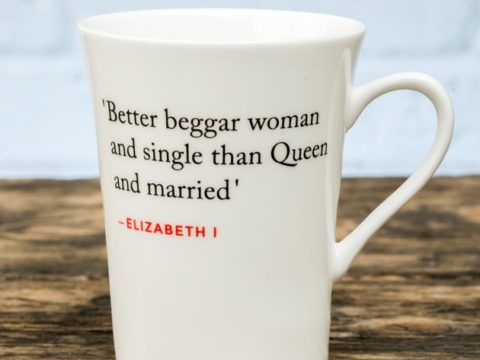Anne Parr
Anne Parr was the third child of her parents to survive. Her father died before she was three, but her mother took as much care as possible of her upbringing. Like her siblings, she received a high degree of education, which she seems to have relished, becoming known for her proficiency in Latin, an unusual accomplishment for a woman of the time. In 1549, the Italian scholar, William Thomas, who was Clerk to the Council of Edward VI praised her has "(a) diamond among the jewels".
Whatever her mental accomplishments she was not especially well-off for her station in life. Her father left £400 for her dowry, but at the time of her mother's death in 1531 she was still unmarried. It appears that after her mother's death, when she was sixteen, she was appointed to a position at court, but whether this was amongst Queen Katharine of Aragon's attendants, or as part of the household that was being formed around Anne Boleyn is unclear.
She was definitely among the gentlewomen of Queen Jane Seymour during August 1537, when she is spoken of as about to be married. Still unmarried in November 1537, she was in the procession of ladies that followed the cortege of the Queen to her burial at Windsor, being placed in the fourth carriage. She remained at Court during Henry's widowhood and, by then married to Sir William Herbert, was appointed to the service of Anne of Cleves, and then Katheryn Howard. She was not implicated in Katheryn Howard's downfall, although was clearly a trusted member of her entourage, being assigned to the care of the Queen's jewels. Anne remained with Queen Katheryn during her imprisonment, and was only released from service following the Queen's execution.
Anne then seems to have transferred to the service of the King's daughters and was at court in 1543, waiting upon the Lady Mary, and the Lady Elizabeth, in company with her sister, Katherine Parr, Lady Latimer. When Katherine Parr became Henry VIII's sixth wife, in a ceremony witnessed by Anne, she became the new Queen's chief lady in waiting. Anne received, jointly with her husband, extensive lands around the suppressed Wilton Abbey, where he later built the impressive Wilton House, seat of the Earls of Pembroke. Anne remained in the circle of the Lady Mary's friends, too, receiving from her a book covered with silver and gilt, costing 7s.6d. in January of 1544, perhaps as a New Year gift.
Anne, like her siblings, was an adherent of the Reformed faith, and a friend and correspondent of Roger Ascham, and was one of the ladies whose private closets Bishop Gardiner planned to have ransacked in the search for forbidden books in an effort to discredit the Queen.
The relationship between the sisters was close, and after Henry's death, Anne was one of Katherine Parr's very few confidantes in the matter of the Dowager Queen's marriage to Sir Thomas Seymour. In a letter from Seymour to Queen Katherine, he mentions that Anne had teased him about the secret marriage, causing him to blush.
Anne's husband was created Earl of Pembroke on 11 th October 1551, but, sadly, Anne did not enjoy her new status as a Countess for long, dying on 20th February 1552, aged 36. The current Earls of Pembroke and Montgomery and the Earl of Carnarvon are her descendants, the latter Earl inhabiting Highclere Castle, famous for its location as Downton Abbey.
Anne Parr
Family Tree
